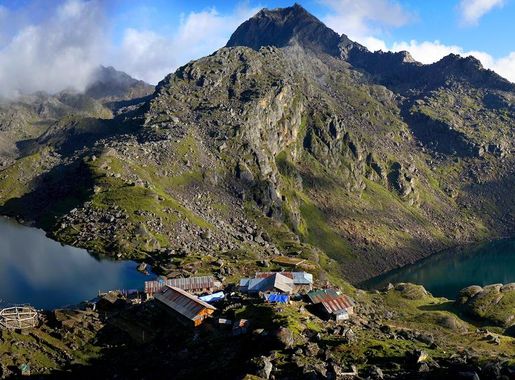
Gosaikunda: A Serene Himalayan Sanctuary
Explore the mystical Gosaikunda Lake in the heart of Nepal's Langtang National Park, a serene sanctuary offering breathtaking views, spiritual significance, and rich cultural heritage.
Gosaikunda, nestled in the heart of the Langtang National Park in Nepal, is a breathtaking alpine freshwater lake revered for its stunning natural beauty and spiritual significance. At an altitude of 4,380 meters, it offers panoramic views of the surrounding snow-capped peaks and a tranquil escape from the hustle and bustle of daily life. The lake is surrounded by rugged terrain, lush forests, and a variety of flora and fauna, making it a paradise for nature lovers and adventure seekers alike. This sacred lake is a major pilgrimage site for both Hindus and Buddhists, who flock here during the Janai Purnima festival in August. According to Hindu mythology, Gosaikunda was created by Lord Shiva when he thrust his trident into the mountain to extract water, quenching his thirst after consuming poison to save the world. The area is dotted with several smaller lakes and pristine streams, adding to its mystical allure. The trek to Gosaikunda is a rewarding experience, offering trekkers a chance to traverse through charming Tamang villages, verdant forests, and open grasslands. The trail is well-marked and provides ample opportunities to witness the local culture and hospitality. With its captivating landscapes, spiritual ambiance, and rich cultural heritage, Gosaikunda is a must-visit destination for anyone seeking an unforgettable Himalayan adventure.
Local tips in Gosaikunda
- Best time to visit is from March to May and September to November for clear skies and pleasant weather.
- Carry sufficient warm clothing as temperatures can drop significantly, especially at night.
- Acclimatize properly to avoid altitude sickness; take it slow and stay hydrated.
- Hire a local guide for a richer cultural experience and safety on the trails.
- Respect the local customs and traditions, especially if visiting during the Janai Purnima festival.
Gosaikunda: A Serene Himalayan Sanctuary
Gosaikunda, nestled in the heart of the Langtang National Park in Nepal, is a breathtaking alpine freshwater lake revered for its stunning natural beauty and spiritual significance. At an altitude of 4,380 meters, it offers panoramic views of the surrounding snow-capped peaks and a tranquil escape from the hustle and bustle of daily life. The lake is surrounded by rugged terrain, lush forests, and a variety of flora and fauna, making it a paradise for nature lovers and adventure seekers alike. This sacred lake is a major pilgrimage site for both Hindus and Buddhists, who flock here during the Janai Purnima festival in August. According to Hindu mythology, Gosaikunda was created by Lord Shiva when he thrust his trident into the mountain to extract water, quenching his thirst after consuming poison to save the world. The area is dotted with several smaller lakes and pristine streams, adding to its mystical allure. The trek to Gosaikunda is a rewarding experience, offering trekkers a chance to traverse through charming Tamang villages, verdant forests, and open grasslands. The trail is well-marked and provides ample opportunities to witness the local culture and hospitality. With its captivating landscapes, spiritual ambiance, and rich cultural heritage, Gosaikunda is a must-visit destination for anyone seeking an unforgettable Himalayan adventure.
When is the best time to go to Gosaikunda?
Iconic landmarks you can’t miss
Gosainkunda
Discover the serene beauty of Gosainkunda, a sacred alpine lake in Nepal, perfect for trekking and spiritual journeys amid breathtaking mountain landscapes.
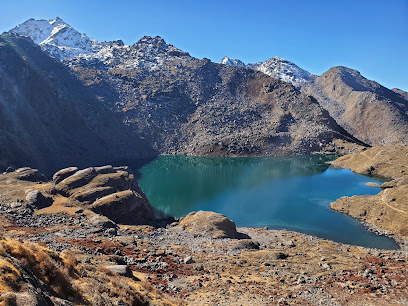
Lauribina
Explore Lauribina, a serene place of worship and cultural treasure in Dhunche, surrounded by stunning mountain landscapes and rich spiritual heritage.
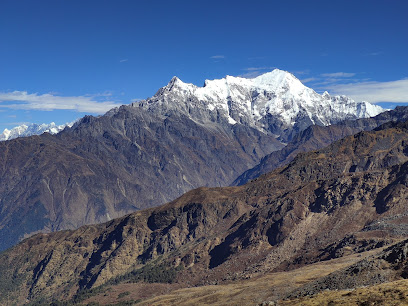
Mini Gosainkunda
Discover the tranquility of Mini Gosainkunda, a sacred Hindu temple in Nepal, surrounded by breathtaking landscapes and rich cultural heritage.
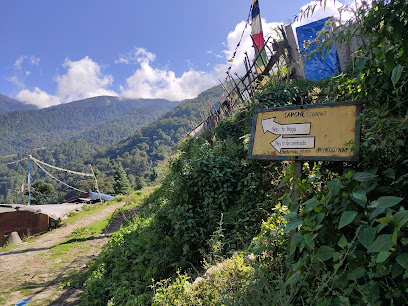
ᤛᤣᤘᤠᤖᤥ Gosaikunda
Discover the sacred beauty of Gosaikunda, a high-altitude lake revered by pilgrims and trekkers amidst the stunning Himalayas.
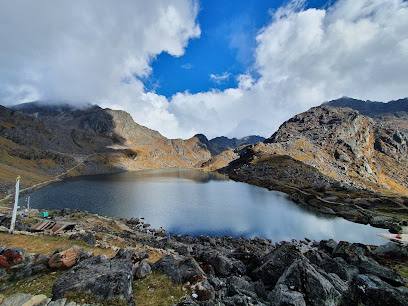
Nilkantha Kunda
Embrace tranquility at Nilkantha Kunda, a peaceful religious destination in Ghyangphedi, where spirituality meets stunning Himalayan vistas.
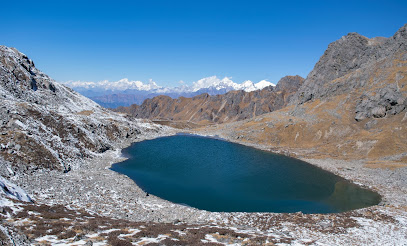
Gosaikunda View Point
Discover the awe-inspiring Gosaikunda View Point in Nepal, where breathtaking mountain vistas and sacred lakes await every traveler.
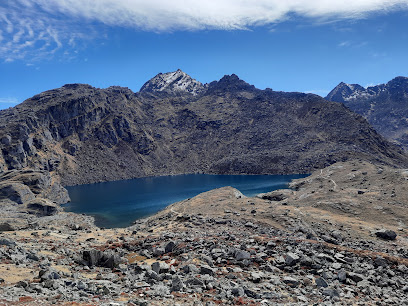
Gosaikunda Lakeside View
Discover the tranquil beauty of Gosaikunda Lakeside View, a serene camping destination in the heart of the Himalayas, perfect for nature lovers.
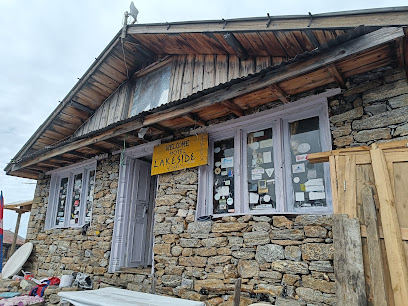
Ragatkunda
Discover the serene beauty and spiritual significance of Ragatkunda, a sacred destination nestled in the tranquil hills of Nepal.
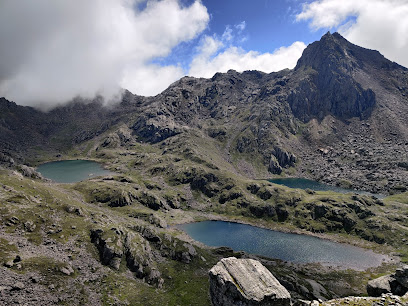
Gosainkunda Trek
Discover the tranquil beauty and spiritual significance of the majestic Gosainkunda Lake on an unforgettable trek through Nepal's stunning Himalayas.
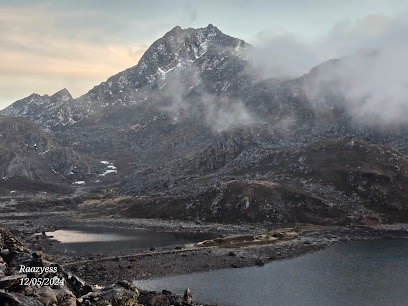
Langtang Gosaikunda Junction
Explore the breathtaking landscapes and sacred lakes of Langtang Gosaikunda Junction, a hiking paradise in Nepal's majestic Himalayas.
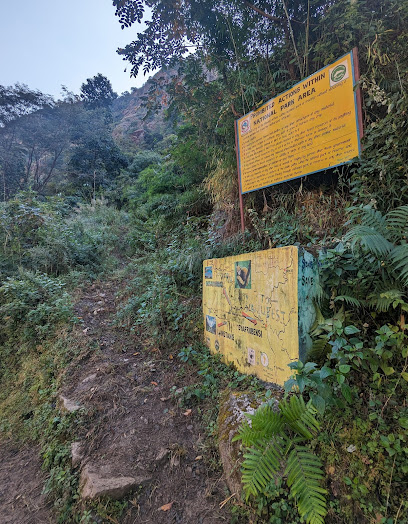
Gosaikunda Public Shelter Made by LACCoS/WWF
Experience the serene beauty of the Himalayas at Gosaikunda Public Shelter, a sustainable lodging for trekkers seeking adventure and tranquility.
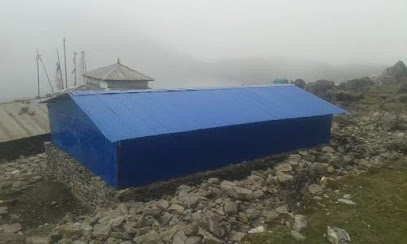
Aamakunda Chandrakunda Ragatkunda view point
Experience the tranquil beauty of Aamakunda Chandrakunda Ragatkunda View Point, a sacred gem in the Himalayas offering breathtaking views and cultural richness.
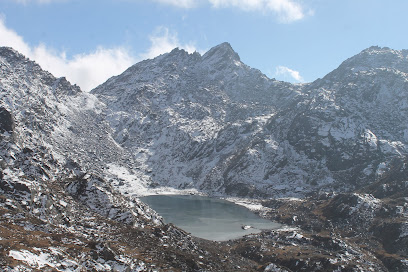
Falam kunda
Experience the serene beauty and rich cultural heritage of Falam Kunda, a hidden gem in Ghyangphedi, Nepal, perfect for nature lovers and adventurers.

Unmissable attractions to see
Nepal Hiking Team
Explore Nepal's breathtaking landscapes with Nepal Hiking Team, your trusted travel agency for unforgettable trekking adventures in the Himalayas.
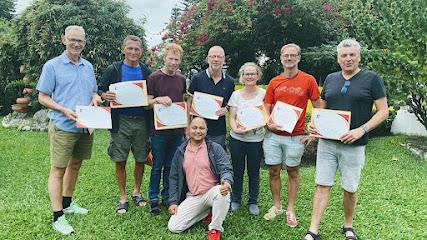
Mailung Waterfall
Experience the natural beauty and tranquility of Mailung Waterfall in Dandagaun, a breathtaking escape into Nepal's stunning landscapes.
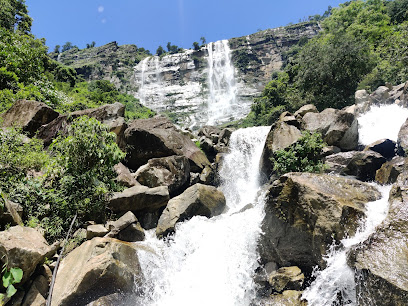
Niru Yoga Homestay Meditation, Hiking Sound healing Retreat
Experience tranquility and rejuvenation at Niru Yoga Homestay, your ultimate retreat for yoga, meditation, and breathtaking hikes in the heart of Nepal.
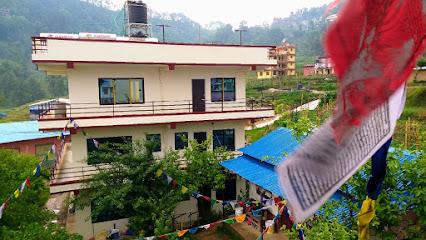
Ama Yangri Peak base camp
Explore the breathtaking Ama Yangri Peak Base Camp in Helambu, Nepal – a trekker's paradise with stunning views and rich cultural experiences.
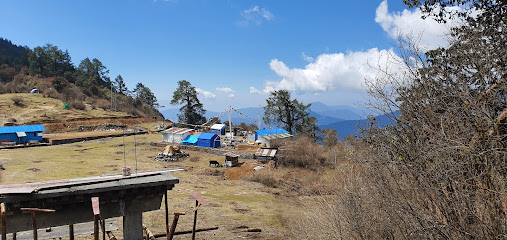
Lauribina
Discover Lauribina, a serene blend of spiritual heritage and natural beauty in Dhunche, Nepal, perfect for adventurers and seekers alike.
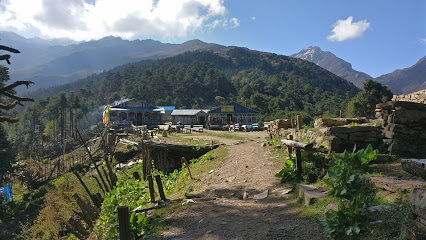
ᤛᤣᤘᤠᤖᤥ Gosaikunda
Explore Gosaikunda, a sacred high-altitude lake in Nepal, renowned for its spiritual significance and stunning Himalayan landscapes.
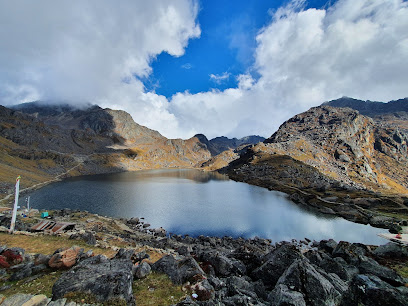
Nepal Tour Guide Team Trek & Expedition Pvt Ltd.
Discover Nepal's breathtaking landscapes and rich culture with expert guidance from Nepal Tour Guide Team Trek & Expedition.
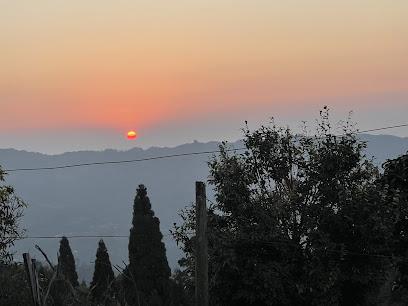
भाँगे झरना (bhange waterfall)
Experience the breathtaking beauty of Bhange Waterfall in Dandagaun, a hidden gem perfect for nature lovers and adventurers.
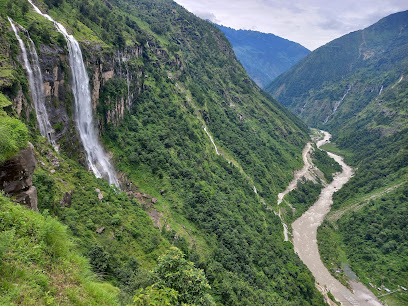
Vishwanath Temple
Explore the exquisite Vishwanath Temple in Lalitpur, a masterpiece of Hindu architecture and a serene place of worship steeped in rich cultural heritage.

Kakani greenary Picnic Spot
Experience the breathtaking beauty of the Himalayas at Kakani Greenery Picnic Spot, the perfect retreat for nature lovers and adventure seekers.
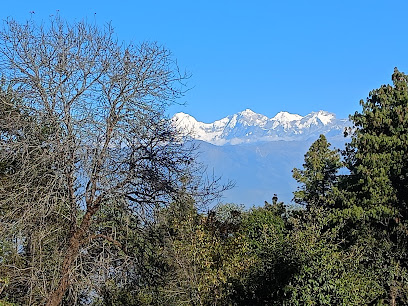
Helambu Great Trail
Experience the breathtaking beauty and rich culture of the Helambu Great Trail in Nepal, a must-visit destination for adventurous travelers.
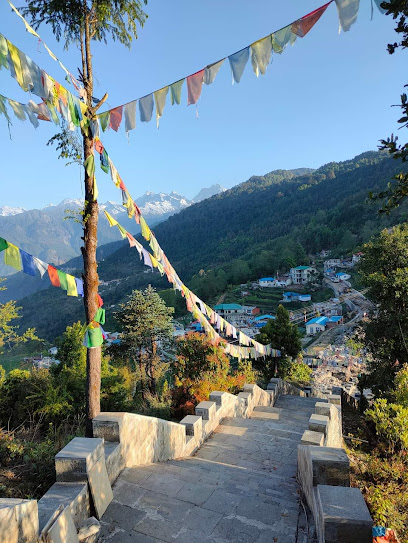
Mount Mania Treks & Expedition P. Ltd.
Discover the heart of Nepal with Mount Mania Treks & Expedition, your premier guide for trekking, culture, and adventure in the Himalayas.
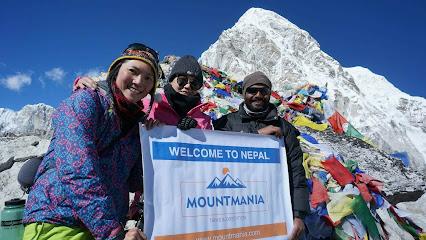
Ghale Gadi
Experience the breathtaking views and rich history at Ghale Gadi, a captivating fort in Laharepauwa, Nepal's scenic landscapes.
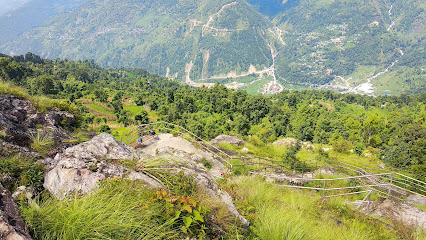
पाँचपोखरी भिउ पोइन्ट
Discover the serene beauty of Panchpokhari Bhuinj Poin, a must-visit tourist attraction in Golche, Nepal, surrounded by stunning lakes and mountains.

Helambu Trekking
Experience the breathtaking beauty and rich culture of Helambu Trekking, a premier trekking destination in the heart of the Himalayas, Nepal.

Essential places to dine
Bamboo Cottage
Experience delightful fast food at Bamboo Cottage in Budhanilkantha – where quick meals meet cozy charm.
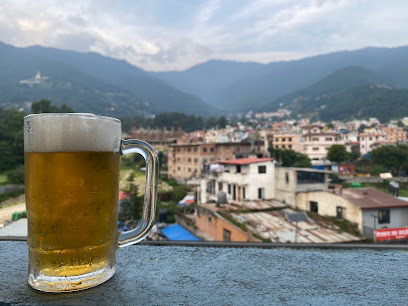
Dhimsa 3100m height
Experience authentic Nepali cuisine amidst breathtaking Himalayan views at Dhimsa - a culinary gem located at 3100 meters.
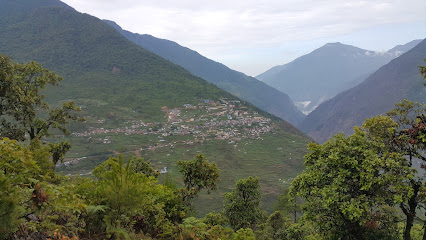
Cholangpaati
Discover family-friendly adventures at Cholangpaati in Gosainkunda - where nature meets culture for an unforgettable getaway.
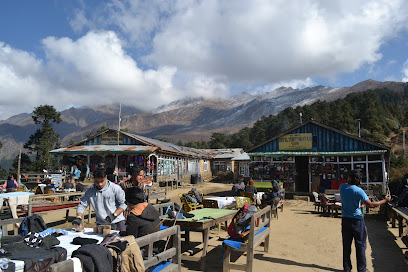
Namgel Resort & Organic Restaurant, Dhunceh
Experience family-friendly dining with organic delights at Namgel Resort in Dhunche's stunning natural setting.

Nepali restaurant
Savor authentic Nepali cuisine in Syapru Besi - A culinary journey filled with rich flavors and warm hospitality awaits you.

Gosaikunda Restaurant
Experience authentic Nepalese cuisine at Gosaikunda Restaurant in Gerkhu – where every dish tells a story.

Laxmi Resturent
Experience the rich flavors of Asia at Laxmi Restaurant in Syapru Besi - A culinary gem amidst breathtaking Himalayan scenery.
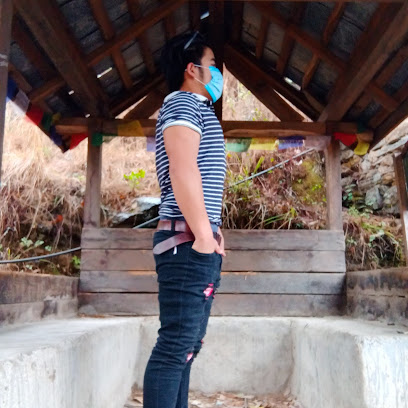
Markets, malls and hidden boutiques
S.K. Handicrafts Export FAIR TRADE Cashmere Company
Explore the rich tradition of cashmere at S.K. Handicrafts, Kathmandu's premier fair trade knit shop offering exquisite craftsmanship and sustainable shopping.
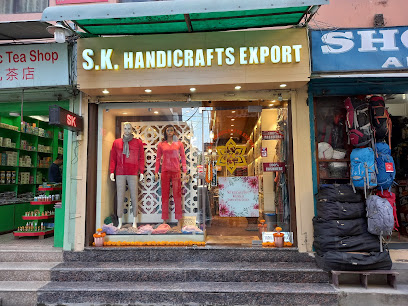
Gorkha Zone Khukuri House
Discover unique Nepali souvenirs and traditional crafts at Gorkha Zone Khukuri House in the heart of Kathmandu's Thamel district.
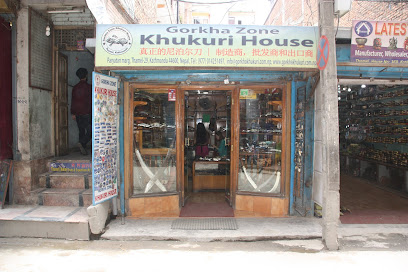
Hardware Boutique - Hardware store in Kathmandu, Nepal
Explore Kathmandu's Hardware Boutique for quality tools, local craftsmanship, and exceptional customer service in the heart of Bansbari.

Unique shop
Explore Kathmandu's unique clothing store for a blend of traditional and modern fashion that captures the essence of Nepalese culture.
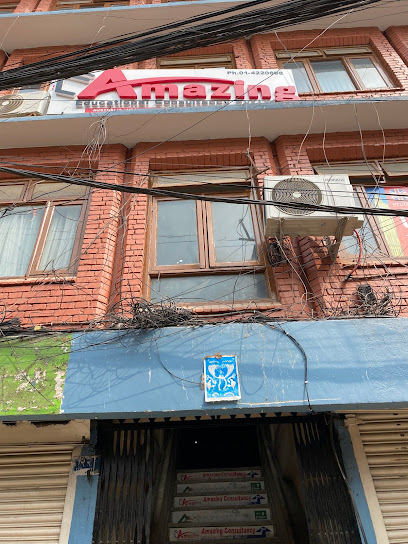
Laxmiram Suppliers
Explore authentic Nepali flavors and essentials at Laxmiram Suppliers, a must-visit grocery store in the heart of Dhunche.
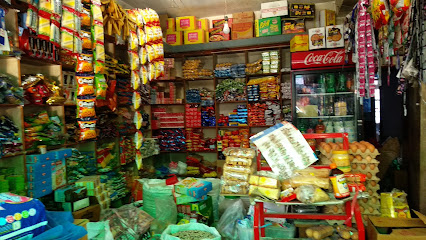
Gifteria - Gift Store Nepal
Explore Gifteria, a captivating gift shop in Kathmandu, offering unique local treasures and handcrafted souvenirs that embody the essence of Nepal.

Amazing Hands Nepal
Explore the rich tapestry of Nepali culture at Amazing Hands Nepal, your destination for unique handicrafts and authentic Buddhist supplies.
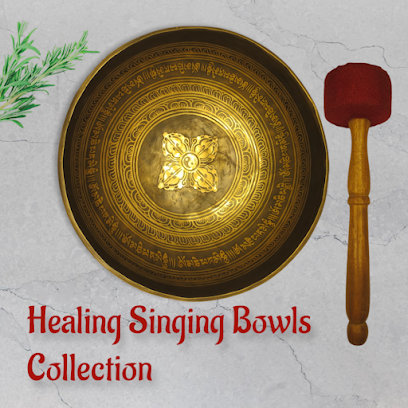
Gong gang stores
Discover unique crafts and local flavors at Gong Gang Stores, the vibrant shopping hub in Chilime, perfect for a memorable experience.

Pandey Fancy Store
Discover the vibrant fashion scene of Nepal at Pandey Fancy Store in Sundaradevi VDC, where style meets tradition in every garment.

I Do Gift Gallery & Anime Store
Explore the whimsical world of I Do Gift Gallery & Anime Store in Kathmandu, where unique gifts and anime collectibles await every visitor.
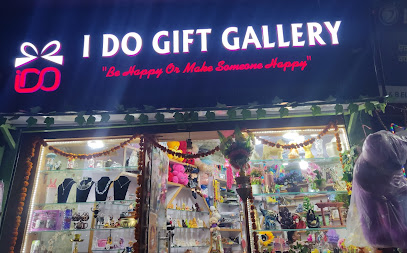
GODGIFTERS
Discover the essence of Nepal at GODGIFTERS, your go-to gift shop for unique souvenirs and handcrafted treasures in Tokha.

Dhungana Readymade Center
Explore the vibrant Dhungana Readymade Center in Fikuri, offering a unique mix of traditional and modern clothing styles that celebrates Nepali culture.
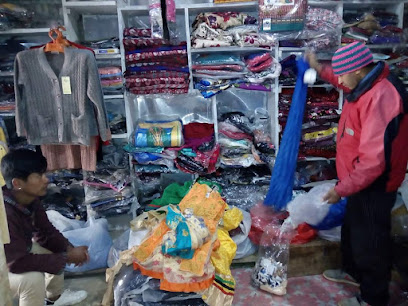
Mira fancy stor
Discover the vibrant fashion scene at Mira Fancy Store in Bageswori Chokade, offering a unique blend of traditional and modern attire for every occasion.

Gosainkunda Trek
Explore the sacred beauty of the Gosainkunda Trek, a stunning hiking area in Nepal known for its breathtaking lakes and spiritual significance.
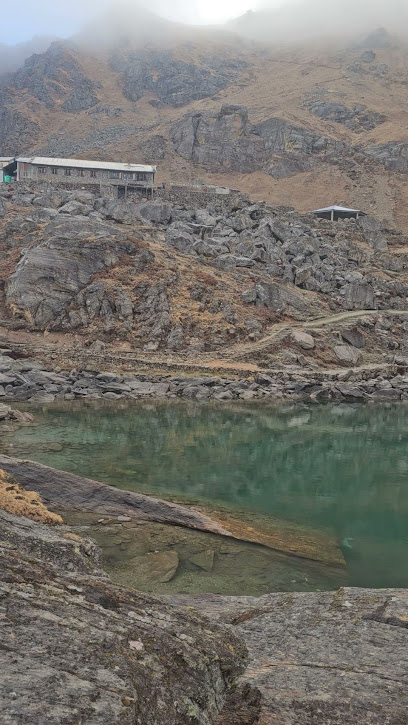
Laxmi Kirana Pasal
Discover the charm of local shopping at Laxmi Kirana Pasal, where authentic Nepali goods meet warm hospitality in the heart of Kiwool.
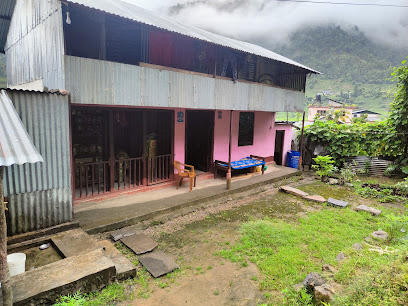
Essential bars & hidden hideouts
Purple Haze Rock Bar
Dive into the heart of Kathmandu's nightlife at Purple Haze Rock Bar, a vibrant venue with live music, great drinks, and a lively atmosphere.
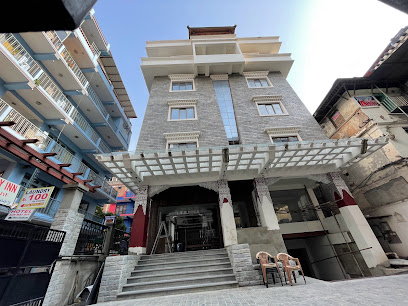
Kathmandu Grill Restaurant
Discover the vibrant culinary culture of Kathmandu at Kathmandu Grill, offering an exquisite blend of grilled delights, Indian cuisine, and pizzas in a lively atmosphere.
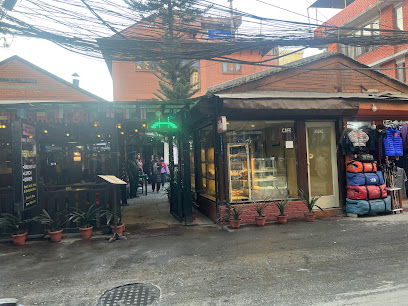
Sam's Bar
Experience the vibrant nightlife of Kathmandu at Sam's Bar, where culture, drinks, and fun come together in the heart of Thamel.
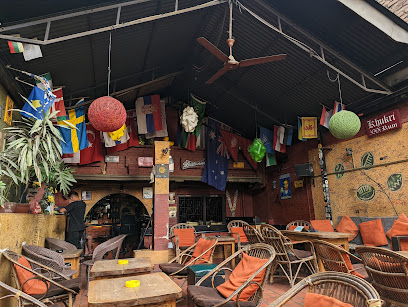
Electric Pagoda Bar & Cafe
Discover the vibrant atmosphere of Electric Pagoda Bar & Cafe in Thamel, Kathmandu, where delightful food and drinks meet local culture.
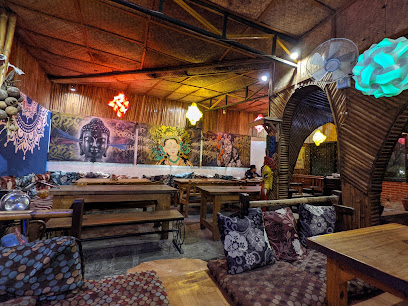
Everest Irish Pub
Discover the vibrant atmosphere of Everest Irish Pub in Kathmandu, where Irish tradition meets Nepalese charm in a cozy setting.
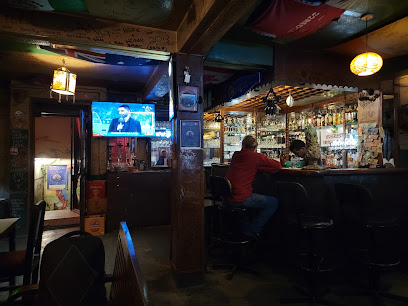
The Bar Bar Black Sip
Discover the vibrant nightlife of Kathmandu at The Bar Bar Black Sip, where great drinks, music, and ambiance converge in the heart of Thamel.
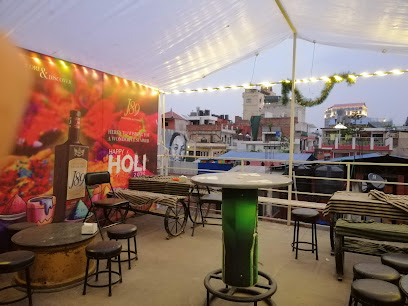
Jigri Sekuwa - Kapan,Faika
Discover authentic Nepali flavors and vibrant atmosphere at Jigri Sekuwa in Kapan, a must-visit pub for every traveler in Kathmandu.
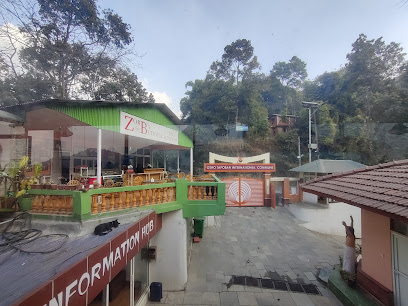
Fat Monk's Bar
Discover the vibrant nightlife at Fat Monk's Bar in Thamel, Kathmandu, where local flavors and friendly faces await you.
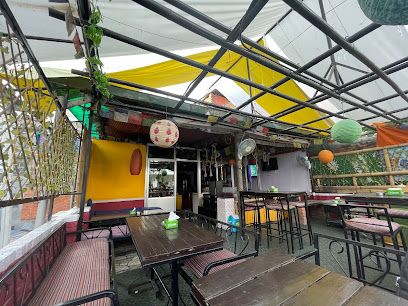
Czech Pub
Discover the best of Czech cuisine and local brews at the Czech Pub in Thamel, Kathmandu – a must-visit for every traveler!
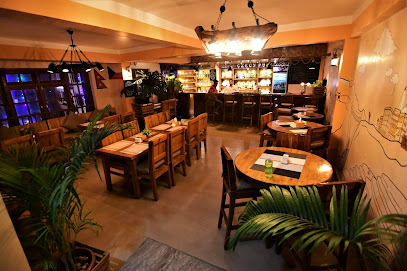
BlackBird
Experience the vibrant nightlife of Kathmandu at BlackBird, a bar where local culture meets modern relaxation in the heart of Thamel.
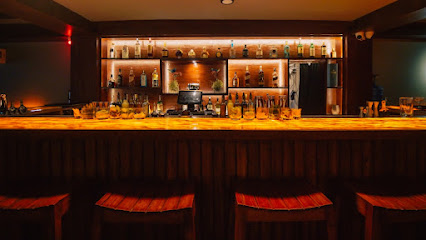
Home Bar
Experience the vibrant nightlife of Kathmandu at Home Bar, a welcoming spot for travelers seeking great drinks and live entertainment.
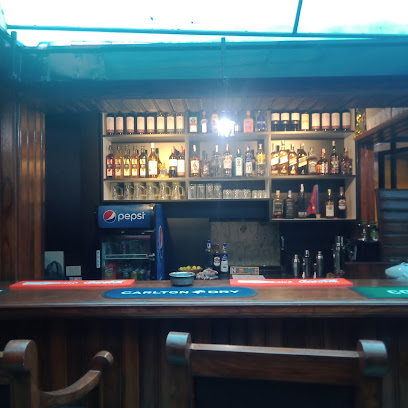
The Shot Station - Best Pub in Kathmandu
Experience the best of Kathmandu's nightlife at The Shot Station, where great drinks and a lively atmosphere await!
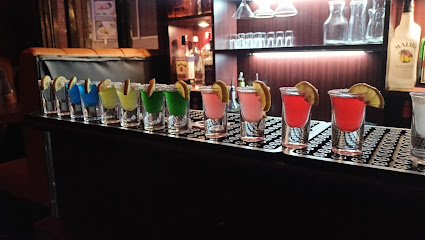
Trekkers Bar
Experience the excitement of sports in the heart of Kathmandu at Trekkers Bar, your ultimate destination for fun, food, and drinks.

Station pub
Experience the vibrant nightlife of Kathmandu at Station Pub, where great drinks and a friendly atmosphere await every traveler.
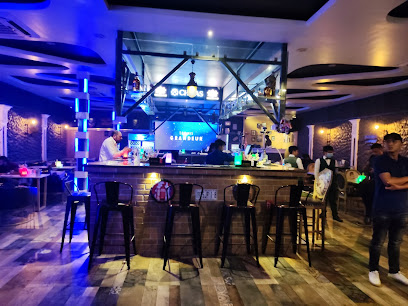
Perkyz Pub
Discover the eclectic atmosphere of Perkyz Pub in Kathmandu, where local flavors meet lively entertainment in a unique setting.
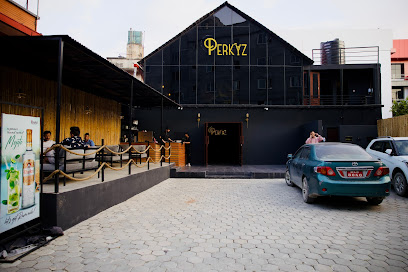
Local Phrases about Gosaikunda
-
- Helloनमस्ते
[Namaste] - Goodbyeफेरी भेटौं
[Feri bhetaun] - Yesहो
[Ho] - Noहोईन
[Hoin] - Please/You're welcomeकृपया
[Kripaya] - Thank youधन्यवाद
[Dhanyabad] - Excuse me/Sorryमाफ गर्नुहोस्
[Maaf garnuhos] - How are you?तपाईंलाई कस्तो छ?
[Tapailai kasto chha?] - Fine. And you?राम्रो छ। तिमी कस्तो छौ?
[Ramro chha. Timi kasto chhau?] - Do you speak English?तिमी अंग्रेजी बोल्छौ?
[Timi angreji bolchhau?] - I don't understandमैले सम्झिन
[Maile samjhin]
- Helloनमस्ते
-
- I'd like to see the menu, pleaseकृपया मेनु हेर्न चाहन्छु
[Kripaya menu hern chahanchhu] - I don't eat meatम मासु काम्छैन
[Ma masu kamchain] - Cheers!चियर्स!
[Cheers!] - I would like to pay, pleaseकृपया भुक्तानी गर्न चाहन्छु
[Kripaya bhuktani garan chahanchhu]
- I'd like to see the menu, pleaseकृपया मेनु हेर्न चाहन्छु
-
- Help!मदत!
[Madat!] - Go away!दूर हुनुहोस्!
[Dur hunuhos!] - Call the Police!पोलिसलाई बुलाउनुहोस्!
[Polis lai bulaunuhos!] - Call a doctor!डाक्टरलाई बुलाउनुहोस्!
[Doctor lai bulaunuhos!] - I'm lostम हराएको छु
[Ma haraeko chu] - I'm illम अस्वस्थ छु
[Ma asvasth chu]
- Help!मदत!
-
- I'd like to buy...म किन्न चाहन्छु...
[Ma kinn chahanchhu...] - I'm just lookingम सिर्जना गरिरहेको छु
[Ma sirjana gari raheko chu] - How much is it?यो कति हो?
[Yo kati ho?] - That's too expensiveयो धेरै महँगो छ
[Yo dherai mahango chha] - Can you lower the price?के तपाईं मूल्य माथि गर्न सक्नुहुन्छ?
[Ke tapai mulya mathi garn saknuhunchha?]
- I'd like to buy...म किन्न चाहन्छु...
-
- What time is it?कति बजेको छ?
[Kati bajeko chha?] - It's one o'clockएक बजे छ
[Ek baje chha] - Half past (10)दसबजे अर्धा
[Dasbaje ardha] - Morningबिहान
[Bihaan] - Afternoonदिउँसो
[Diunso] - Eveningसांझ
[Saanjh] - Yesterdayहिजो
[Hijo] - Todayआज
[Aaj] - Tomorrowभोलि
[Bholi] - 1एक
[Ek] - 2दुई
[Dui] - 3तीन
[Tin] - 4चार
[Char] - 5पाँच
[Paanch] - 6छ
[Chh] - 7सात
[Saath] - 8आठ
[Aath] - 9नौ
[Nau] - 10दस
[Das]
- What time is it?कति बजेको छ?
-
- Where's a/the...?कहाँ छ...?
[Kaha chha...?] - What's the address?ठेगाना के हो?
[Thegana ke ho?] - Can you show me (on the map)?के तपाईं मलाई देखाउन सक्नुहुन्छ (नक्सा मा)?
[Ke tapai malai dekhaun saknuhunchha (Naksha ma)?] - When's the next (bus)?अर्को (बस) कहिले जान्छ?
[Arko (Bas) kahile janchh?] - A ticket (to ....)टिकट (मा ....)
[Ticket (ma ....)]
- Where's a/the...?कहाँ छ...?
History of Gosaikunda
-
Gosaikunda, a sacred alpine lake situated in the Langtang National Park, holds remarkable mythological importance in Hinduism. According to Hindu mythology, Gosaikunda was created by Lord Shiva. In a desperate attempt to quench his burning throat after consuming poison to save the world, Shiva struck his trident into the mountain, creating three springs that formed the lake. This mythological connection makes Gosaikunda a revered pilgrimage site, especially during the Janai Purnima festival when thousands of devotees trek to the lake to offer their prayers.
-
Historical records indicate that Gosaikunda has been a site of pilgrimage for centuries. During the medieval period, pilgrims from various parts of Nepal and neighboring regions would undertake arduous journeys through treacherous terrains to reach the sacred lake. The pilgrimage routes, some of which are still used today, are dotted with ancient rest houses and shrines, reflecting the enduring spiritual significance of Gosaikunda.
-
Established in 1976, Langtang National Park encompasses the Gosaikunda area and plays a crucial role in its preservation. The park, Nepal's first Himalayan national park, was created to protect the unique flora and fauna of the region, as well as its cultural heritage. The inclusion of Gosaikunda within the park's boundaries ensures that the lake and its surroundings are safeguarded from environmental degradation, allowing both nature and culture to thrive.
-
Gosaikunda is the focal point of several cultural festivals, the most prominent being the Janai Purnima festival. Celebrated during the full moon of the month of Shrawan (July-August), this festival sees thousands of Hindu and Buddhist pilgrims converge at the lake to take a ritual bath in its icy waters. The festival is marked by various religious ceremonies, the tying of sacred threads (janai), and the chanting of hymns, creating a vibrant and spiritually charged atmosphere that reflects the deep cultural roots of the region.
-
In recent decades, Gosaikunda has gained prominence as a trekking destination, attracting not only pilgrims but also adventure enthusiasts and nature lovers. The challenging trek to the lake, which often includes the Lauribina La pass at an altitude of 4,610 meters, offers breathtaking views of the Himalayan landscape. The influx of tourists has brought economic benefits to the local communities, leading to the development of lodges and other amenities while also highlighting the need for sustainable tourism practices to preserve the area's natural and cultural heritage.
Gosaikunda Essentials
-
Gosaikunda is located in the Langtang National Park of Nepal. The nearest international airport is Tribhuvan International Airport in Kathmandu. From Kathmandu, you can take a bus or hire a jeep to Dhunche, which is the starting point of the trek to Gosaikunda. The bus journey typically takes around 6 to 7 hours. From Dhunche, it is a multi-day trek to Gosaikunda, passing through several villages and stunning landscapes.
-
Transportation options to Gosaikunda primarily involve trekking. There are no direct roads to the lake itself. Local buses and jeeps from Kathmandu to Dhunche are the most common means of reaching the starting point of the trek. During the trek, be prepared for steep and rugged trails. Porters and guides are available for hire in Dhunche and other starting points, which can be particularly helpful for first-time trekkers.
-
The official currency in Nepal is the Nepalese Rupee (NPR). It is advisable to carry cash, as credit cards are rarely accepted in the villages along the trek route. ATMs are available in Kathmandu and some larger towns like Dhunche, but it is best to withdraw sufficient cash before starting the trek. Small denominations are particularly useful for paying for meals, accommodation, and other services along the route.
-
Gosaikunda is generally a safe area for trekkers, but standard precautions should be taken. Avoid trekking alone and always stay on marked trails. Be aware of weather conditions, as they can change rapidly in the mountains. There are no specific high-crime areas targeting tourists, but always keep an eye on your belongings. Petty theft can occur in crowded areas like bus stations.
-
In case of emergency, contact the local police or the nearest medical facility. The emergency number in Nepal is 100 for police and 102 for ambulance services. It is highly recommended to have travel insurance that covers medical emergencies and evacuation. For minor health issues, carry a basic first-aid kit and any necessary medications. There are some health posts along the trekking route, but facilities are basic.
-
Fashion: Do wear appropriate trekking gear. Dress in layers and be prepared for cold weather at higher altitudes. Avoid wearing revealing clothing. Religion: Do respect local customs and traditions. Always ask for permission before taking photos of locals or religious sites. Public Transport: Do be respectful and patient, as public transport can be crowded and slow. Greetings: Do greet locals with a 'Namaste' and a slight bow. Eating & Drinking: Do try local foods, but ensure they are cooked thoroughly to avoid illness. Don't drink tap water; always drink bottled or purified water.
-
To experience Gosaikunda like a local, engage with the local villagers and learn about their way of life. Participate in local festivals if your visit coincides with them, such as the Janai Purnima festival in August. Stay in teahouses along the trekking route to get a taste of local hospitality. Don't miss the sunrise views over the Langtang and Ganesh Himal ranges from the higher points of the trek.
Trending Landmarks in Gosaikunda
Nearby Cities to Gosaikunda
-
Things To Do in Kathmandu
-
Things To Do in Bhaktapur
-
Things To Do in Patan
-
Things To Do in Gorkha
-
Things To Do in Bandipur
-
Things To Do in Chitwan
-
Things To Do in Namche Bazaar
-
Things To Do in Pokhara
-
Things To Do in Lumbini
-
Things To Do in Patna
-
Things To Do in Darjeeling
-
Things To Do in Gangtok
-
Things To Do in Siliguri
-
Things To Do in Varanasi
-
Things To Do in Paro

